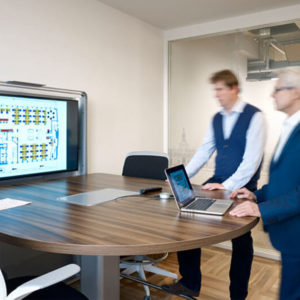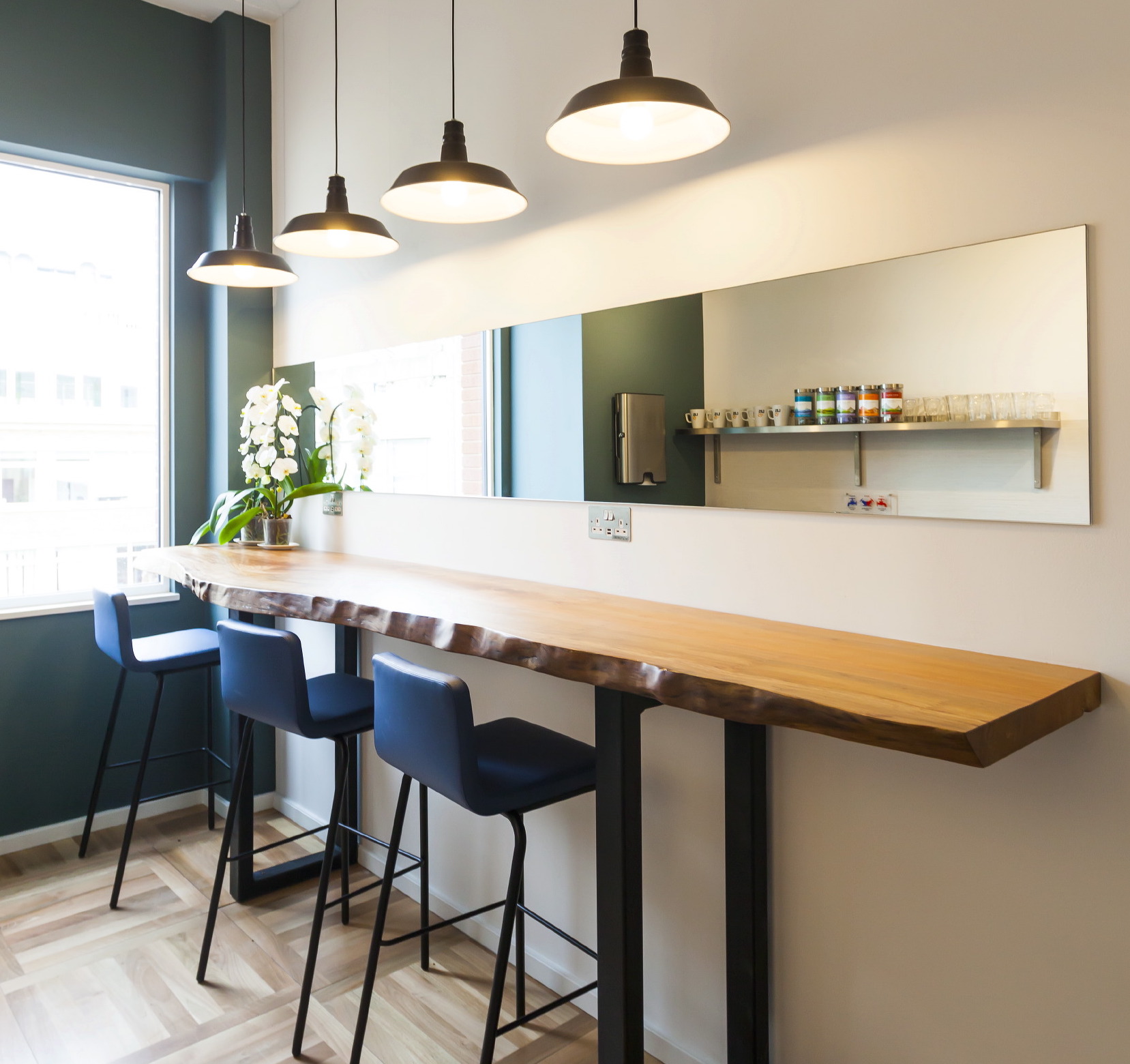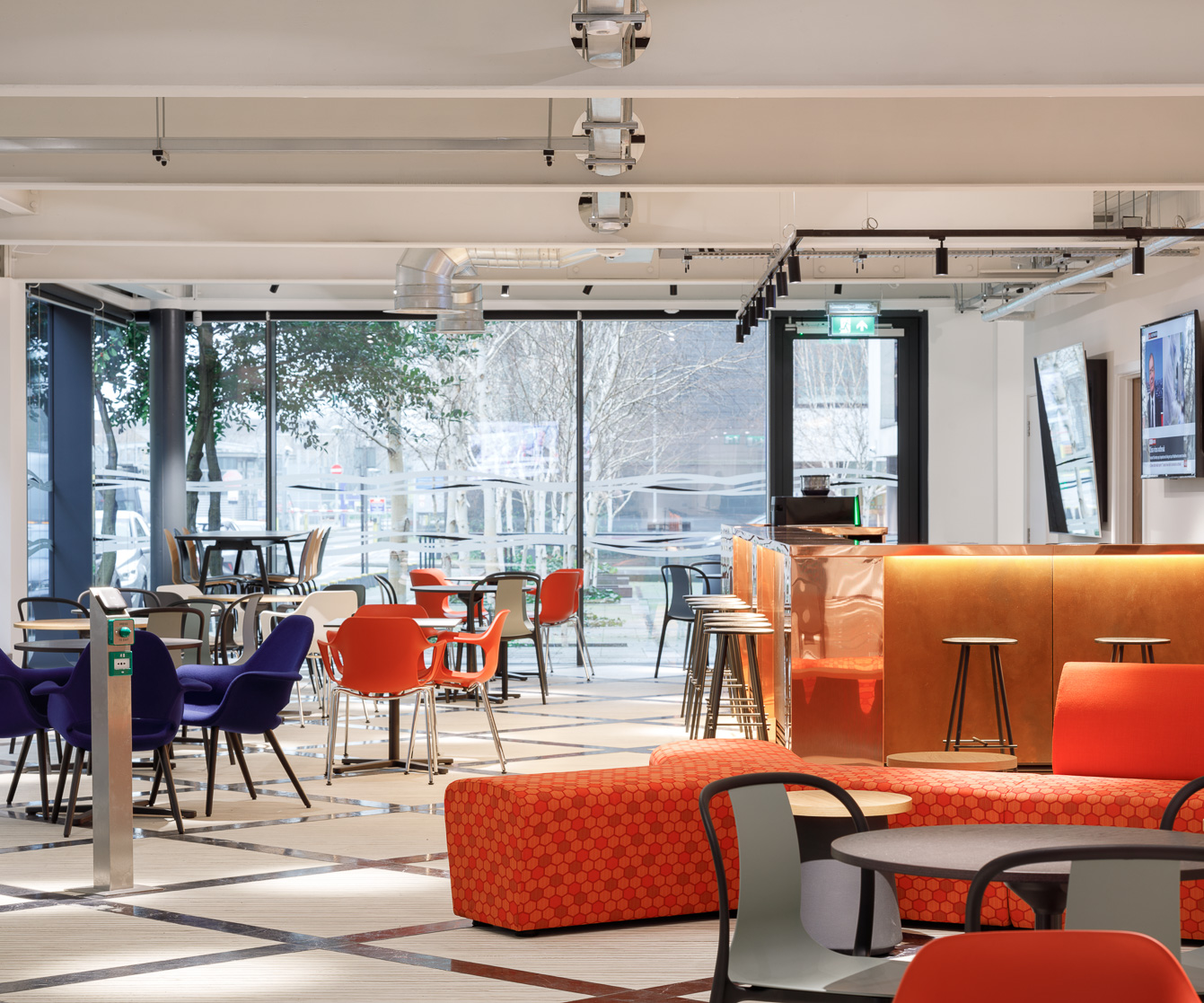1. Go Somewhere New
One of the best way to energise your team ahead of a big meeting is to offer them a new experience. Give them a break away from the office that they work in every day and meeting rooms that they have already spent many hours in.
This works because the human brain naturally seeks out novelty. In a phenomenon known as the ‘coffee shop effect’, changing scenery has been shown to make workers more motivated, productive and creative, through increasing their levels of dopamine.
We therefore recommend booking external meeting rooms, especially for long meetings. This will offer your team a welcome change from the everyday and help you lead a more productive and impactful session.
2. Take Regular Breaks
When you have a lot to cover, it is tempting to try and do so in one long session. However, doing this can significantly impact how useful the overall meeting will be. For both those running a long meeting and those participating, not having regular breaks will naturally reduce an individual’s productivity and ability to contribute.
According to the International Institute for Facilitation and Change, multi-hour meetings should have a break scheduled at least every 90 minutes. Short breaks of just 5 to 10 minutes will make a huge difference to the concentration levels of your team, allowing members to stretch their legs, use the bathroom and drink water. So long as you are clear when participants are expected to return to the meeting room, they will do so re-energised and better equipped to make the most of the session.
3. Use A Variety of Mediums
Not everyone in a meeting responds to the same methods. Some people prefer simply listening to a speaker, so they can make their own notes. Others prefer brainstorming on a whiteboard or receiving hand-outs, so they can focus on participation rather than writing. It is therefore essential that a long meeting doesn’t confine itself to a single method of presentation. Otherwise, there will inevitably be some participants who are less likely to get the most of the session. Also, switching up the mediums you use will add variety to the long meeting, helping to keep your team engaged and interested by offering them something new.
There are a great number of mediums that we recommend you take advantage of when running a long meeting. As mentioned, whiteboard brainstorming is a fantastic way to encourage the participation of the whole room. Likewise, easy-to-follow hand-out notes are a hugely effective method of ensuring everyone in the meeting takes away the key points and actions. Other opportunities include: screen presentations, videos, quizzes, worksheets and role-play scenarios.
4. Have A Clear Meeting Agenda In Advance
If you are clear from the beginning what a long meeting will entail, you are much more likely to get what you want out of that meeting.
Pre-agreed upon meeting agendas are important because they establish the tone of the meeting. They ensure that everyone involved understands the purpose of the meeting, what needs to be achieved and what they should take away from it. Also, they frame the conversation, helping keep topic points to their allotted time-frames and reducing the possibility of distractions or irrelevant questions derailing the conversation.
Prior to the meeting, contact the participants with your proposed agenda of the topics you want to address. If anyone has any additional topics to add, it is best that you learn this ahead of time so that you can work it into the timeline of the meeting.



